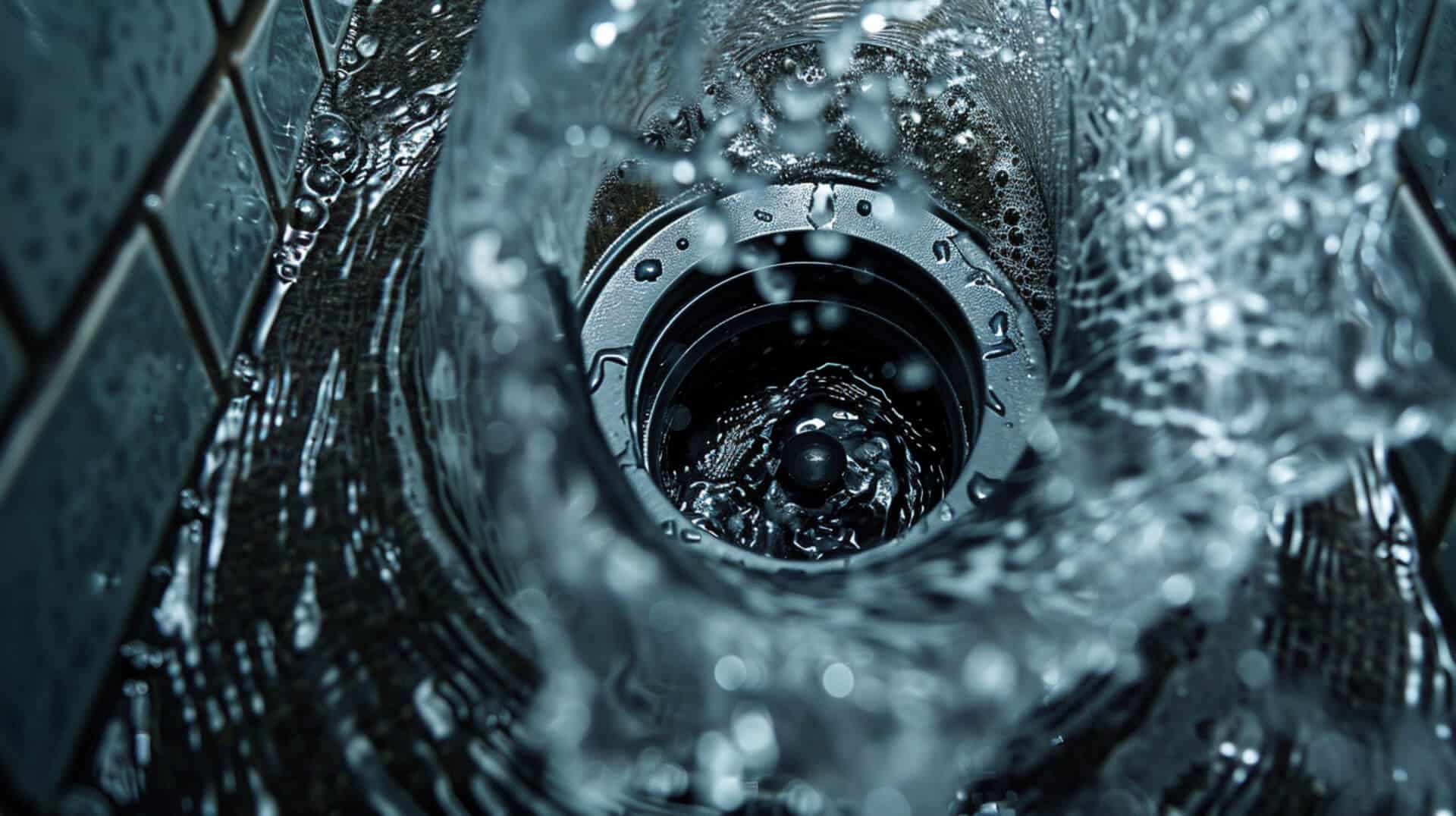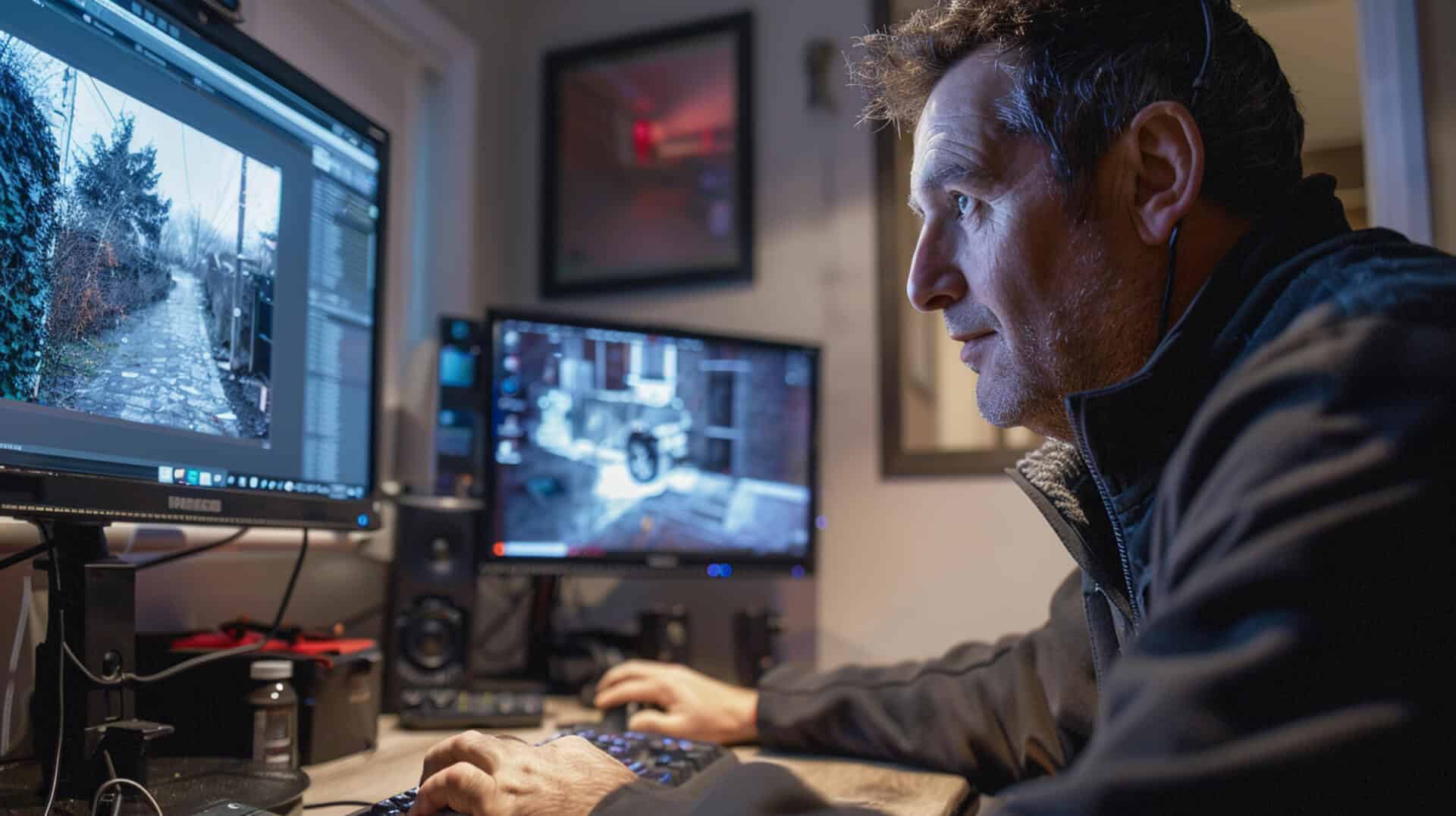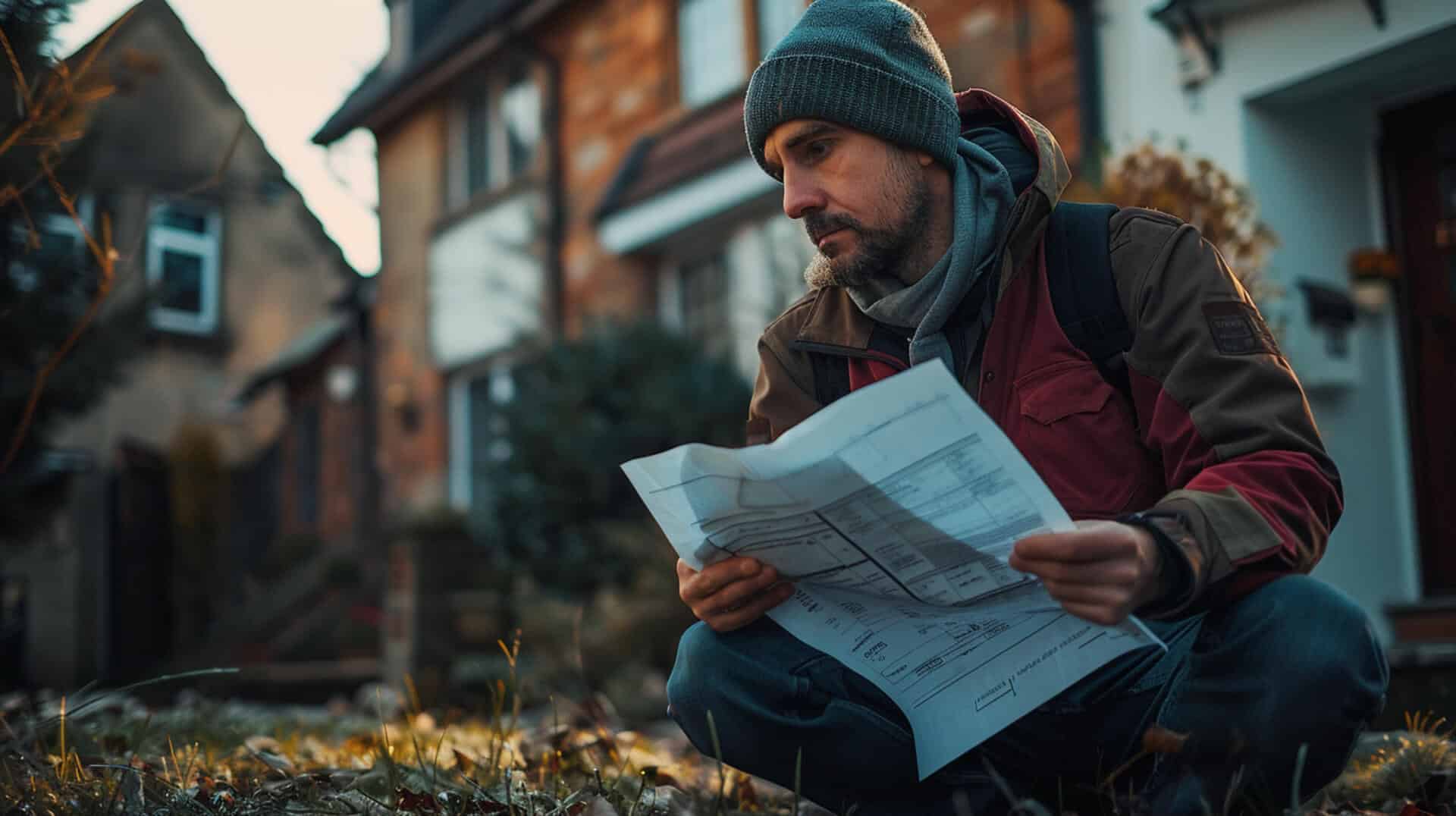 How To Interpret A CCTV Drain Report
How To Interpret A CCTV Drain Report

When you’re tasked with the management of property, understanding the condition of your drainage system is paramount. A CCTV drain report is a comprehensive assessment tool that utilises advanced inspection technology to provide a detailed view of your drains and sewers. This report is crucial for identifying issues such as blockages, tree root infestations, and structural damage, which can have significant implications for property maintenance and management.
The Role of Advanced Inspection Technology
The technology behind these reports includes high-definition digital cameras, push-rod systems, and remote-controlled crawlers that offer 360 visuals of the interior of pipes. This equipment allows for live analysis and accurate assessments without the need for excavation. The use of such advanced technology ensures that the reports are not only precise but also cost-effective, as they help to prevent issues before they escalate into costly repairs.
Common Utilisation Scenarios
CCTV drain reports are commonly utilised in various scenarios, from pre-adoption and construction phases to emergency responses and routine maintenance checks. They are also essential during property transactions, providing evidence of the drainage system’s condition to inform negotiations and decision-making.
Demystifying Report Interpretation
This guide is designed to demystify the process of interpreting CCTV drain reports. By providing you with a clear understanding of the technology, the structure of the reports, and the significance of the findings, you will be equipped to make informed decisions regarding the maintenance and management of your property’s drainage system.
The Technology Behind CCTV Drain Inspections
When you’re faced with the task of understanding a CCTV drain report, it’s essential to grasp the technology that makes such detailed inspections possible. CCTV drain inspections employ a suite of advanced tools designed to navigate and visualise the often inaccessible areas of drainage systems.
Advanced Inspection Equipment
The core of this technology is the use of high-definition digital cameras that are mounted on remote-controlled crawlers. These devices are engineered to traverse the complex network of pipes, providing a live feed of the interior conditions. The cameras offer 360 visuals, ensuring no corner is left unexamined.
Enhancements from Remote-Control and 360 Visuals
Remote-controlled crawlers bring a significant advantage to the inspection process. They allow operators to steer the cameras to specific areas of interest, all from a safe and convenient location. The 360 camera technology further enhances this by giving a comprehensive view of the pipe’s interior, allowing for a thorough assessment without the need for physical entry.
Real-Time Data Processing
Real-time data processing is integral to these inspections. As the camera relays footage, the data is instantly analysed, enabling immediate identification of issues such as blockages or structural damage. This prompt analysis is crucial for the timely decision-making necessary in maintenance and repair.
Comprehensive Drain Assessments
Together, these technological advancements ensure that CCTV drain inspections are not only thorough but also efficient. They provide a level of detail that manual inspections simply cannot match, making them indispensable tools for accurate drain assessments. With this technology, you can be confident in the accuracy and reliability of the findings presented in your CCTV drain report.
Understanding the Structure of a CCTV Drain Report
A CCTV drain report is a comprehensive document that provides an in-depth look at the condition of underground drainage systems. It is a critical tool for property owners, business owners, and facility managers to understand the health and integrity of their drainage infrastructure.
Key Components of the Report
The report typically includes high-resolution footage and imagery that detail the internal state of the pipes. This visual data is accompanied by a written analysis that interprets the findings, often presented in a standardised format such as the Wincan report, which is widely recognised in the industry.
Documentation and Presentation of Findings
Findings in the report are meticulously documented, with issues like blockages, tree root infestation, and pipe damage clearly identified and described. The report may include a defect grading system that categorises the severity of each issue, aiding in the prioritisation of maintenance and repairs.
Detailed Analysis Section
The detailed analysis section of the report provides a granular view of the drainage system’s condition. It includes information on the material, size, and defects of the pipes, as well as recommendations for remedial actions. This section is crucial for planning both immediate and long-term maintenance strategies.
Utilising the Report’s Structure
Property owners can use the report’s structured format to quickly locate critical information. By familiarising oneself with the layout and grading system, one can efficiently assess the urgency of any issues and make informed decisions regarding the necessary steps to ensure the system’s optimal functioning.
Deciphering Defect Grades and Their Implications
Understanding the defect grading system in a CCTV drain report is crucial for property owners to assess the condition of their drainage system. These grades are typically assigned based on the severity and urgency of the issues detected during the inspection.
Classification of Defect Grades
Defect grades in CCTV drain reports are usually classified into categories that reflect the condition of the drainage system:
- Grade 1: Indicates a system in good condition with no significant issues.
- Grade 2: Suggests minor defects that may need monitoring but not immediate action.
- Grade 3: Points to defects that require attention and may escalate if not addressed.
- Grade 4: Represents serious defects that demand urgent repair to prevent system failure.
Interpreting Defect Grades
As a property owner, understanding these grades helps you prioritise maintenance and repairs:
- Grade 1 findings typically require no action, offering peace of mind about the system’s condition.
- Grade 2 issues should be noted and checked in subsequent inspections to monitor any changes.
- Grade 3 defects necessitate planning for repairs or maintenance to prevent deterioration.
- Grade 4 conditions require immediate attention to restore system integrity and function.
Prioritising Repair and Maintenance Efforts
The defect grading guides you in allocating resources effectively:
- Minor issues (Grades 1 and 2) might only need regular surveillance.
- More significant concerns (Grades 3 and 4) could warrant budgeting for repairs or replacements to avoid more costly damage in the future.
By interpreting these grades accurately, you can ensure the longevity and reliability of your drainage system.
Identifying Common Issues Highlighted in Reports
CCTV drain reports are instrumental in revealing a variety of issues that may compromise the integrity of drainage systems. Understanding these common problems is essential for timely intervention and maintenance planning.
Frequent Issues in Drain Inspections
The most commonly reported issues in CCTV drain inspections include:
- Blockages: Often caused by the accumulation of debris, grease, or foreign objects.
- Tree Root Infestations: Roots can infiltrate pipes, leading to obstructions and potential pipe damage.
- Collapsed Sewers: A severe condition where pipes have caved in, disrupting the flow.
Descriptions in the Report
In the report, these issues are described with precision:
- Blockages are typically indicated by slowed drainage and may be accompanied by images of the obstruction.
- Tree Root Infestations are identified by the visual presence of roots within the pipe’s interior.
- Collapsed Sewers are evident through a sudden loss of structural integrity in the footage.
Immediate Actions
Upon identifying these issues, immediate actions may include:
- Blockages: Engaging professional cleaning services to remove the obstruction.
- Tree Root Infestations: Consulting with specialists to assess the need for root cutting or pipe repair.
- Collapsed Sewers: Prioritising repair or replacement to restore functionality.
Preventive Maintenance Planning
Understanding these common issues aids in preventive maintenance planning by:
- Highlighting areas prone to problems.
- Informing the scheduling of regular inspections.
- Guiding investments in protective measures like root barriers or improved waste disposal practices.
By recognising and addressing these issues promptly, you can maintain the health and efficiency of your drainage system.
Analysing Report Recommendations for Maintenance and Repairs
When interpreting a CCTV drain report, the recommendations section is pivotal for planning maintenance and repairs. This part of the report translates the findings into actionable steps.
Presentation of Recommendations
The recommendations are typically presented at the end of the report, following the detailed analysis of the drainage system. They are based on the severity of the issues identified and are categorised as follows:
- Immediate Actions: Urgent repairs needed to prevent system failure.
- Short-Term Measures: Necessary repairs that should be addressed soon to avoid further damage.
- Long-Term Maintenance: Suggested actions to ensure the ongoing health of the drainage system.
Criteria for Suggested Actions
The criteria used to determine these actions include:
- Defect Severity: Based on the grading system used in the report.
- Risk Assessment: Potential impact of the defect on the system’s operation.
- Cost-Benefit Analysis: Evaluation of the cost of immediate action versus potential future expenses.
Evaluating Repair Urgency
Property owners can evaluate the urgency of repairs by considering:
- Defect Grades: Higher grades typically indicate more urgent issues.
- Operational Impact: How the defect affects the drainage system’s functionality.
- Compliance Requirements: Whether the defect puts the owner at risk of non-compliance with regulations.
Alignment with Facility Management Best Practices
The recommendations should align with best practices in facility management, ensuring:
- Safety: Prioritising actions that mitigate safety risks.
- Efficiency: Suggesting repairs that improve system performance.
- Sustainability: Considering the long-term health of the drainage system.
By carefully considering these recommendations, property owners can make informed decisions to maintain the integrity and functionality of their drainage systems.
Ensuring Compliance with Environmental and Regulatory Standards
CCTV drain reports play a critical role in ensuring that drainage systems comply with environmental and regulatory standards. These reports provide a detailed account of the condition of the drains, which is essential for meeting the requirements set by environmental authorities and for obtaining or renewing IPPC Licences.
Addressing Compliance Issues
The reports address several compliance issues:
- Environmental Protection: They help identify potential pollutants or hazards that could compromise local ecosystems.
- Public Health: By spotting blockages or damages that could lead to sanitation issues, the reports contribute to public health safeguards.
- Building Regulations: They ensure that drainage systems adhere to the building codes and standards required by law.
Demonstrating Compliance During Inspections
Property owners can use the detailed analysis provided in CCTV drain reports to demonstrate compliance during inspections by:
- Presenting the report as evidence of regular maintenance and proactive management of the drainage system.
- Using the report to verify that any previously identified issues have been addressed and rectified.
Consequences of Non-Compliance
Non-compliance identified through CCTV drain reports can lead to:
- Legal Repercussions: Fines or penalties for failing to meet regulatory standards.
- Operational Disruptions: Potential shutdowns or interruptions to business operations until compliance is achieved.
- Reputational Damage: Negative public perception due to non-adherence to environmental responsibilities.
By maintaining a clear understanding of the findings in CCTV drain reports, property owners can ensure their drainage systems meet all necessary regulations and avoid the consequences of non-compliance.
Preventive Measures and Maintenance Strategies
CCTV drain reports not only identify current issues but also serve as a preventive tool to avert future drainage problems. By understanding the findings, property owners can take proactive steps to maintain the health of their drainage systems.
Suggested Preventive Measures
Based on the findings in the CCTV drain reports, several preventive measures are recommended:
- Regular Cleaning: To prevent blockages, schedule routine cleaning of the drains.
- Tree Root Management: Implement root barriers or regularly trim nearby tree roots to prevent infestation.
- Inspection of Connections: Ensure that all pipe connections are secure to avoid leaks and damages.
Frequency of CCTV Drain Surveys
For effective preventive maintenance, CCTV drain surveys should be conducted:
- Annually: As a general rule, especially for systems with a history of issues.
- After Severe Weather: To check for any damage caused by storms or flooding.
- Before and After Major Building Works: To ensure that construction has not affected the drainage system.
Role of Maintenance Plans
Maintenance plans are crucial as they:
- Provide a scheduled approach to inspections and cleaning.
- Help budget for potential repairs.
- Extend the lifespan of the drainage system by preventing small issues from becoming major problems.
Implementation by Property Owners
To implement these strategies, property owners should:
- Engage with professional drainage companies for regular surveys.
- Keep a record of all inspections and maintenance work.
- Act promptly on any recommendations provided in the CCTV drain reports.
By adopting these preventive measures and maintenance strategies, property owners can ensure the longevity and reliability of their drainage systems, ultimately saving time and resources in the long run.
Utilising CCTV Drain Reports in Property Transactions
CCTV drain reports are valuable assets during property transactions, providing a transparent account of the drainage system’s condition. These reports can significantly influence negotiations and decision-making processes in sales, leasing, or addressing tenant damage claims.
Leveraging Reports in Transactions
In property transactions, CCTV drain reports serve multiple purposes:
- Verification of Condition: They offer a factual basis for the state of the drainage system, which can be a point of negotiation.
- Transparency: Providing these reports to potential buyers or tenants demonstrates openness and can build trust.
- Assessment of Liability: In cases of tenant damage claims, the reports can help establish the pre-existing condition of the drainage system.
Valuable Information for Negotiations
The most critical information in the report for transactions includes:
- Defect Grades: Indicate the urgency of repairs needed, which can affect the property’s value.
- Detailed Analysis: Offers a clear picture of the system’s condition, informing maintenance expectations.
Influence on Decision-Making
CCTV drain reports can sway decision-making by:
- Highlighting Potential Costs: Informing buyers or tenants of possible future expenses.
- Providing a Basis for Adjustments: Justifying price adjustments or repair responsibilities.
Benefits to Buyers or Tenants
Providing a detailed CCTV drain report offers several benefits:
- Informed Decisions: Buyers or tenants can make decisions with a full understanding of the property’s condition.
- Negotiation Power: Equips parties with factual data to negotiate terms effectively.
By incorporating CCTV drain reports into property transactions, you can ensure a fair and informed process for all parties involved.
Navigating the Limitations of CCTV Drain Surveys
CCTV drain surveys are a powerful tool for assessing the condition of drainage systems, but they come with inherent limitations that property owners should be aware of.
Common Challenges in Drain Inspections
Several challenges may arise during CCTV drain surveys:
- Access Point Requirements: Inspections require suitable entry points, which may not always be available or easily accessible.
- Complex Pipe Layouts: Intricate or unconventional pipe networks can hinder the crawler’s ability to navigate and inspect thoroughly.
- Visibility Issues: Heavy blockages or murky water can obscure the camera’s view, limiting the effectiveness of the survey.
Impact of External Conditions
External factors can also affect the survey process:
- Weather Conditions: Heavy rainfall can flood the system, while extreme cold may cause pipes to freeze, both of which can delay or complicate inspections.
- Property Specifications: Unique architectural features or landscaping can restrict access to the drainage system.
Mitigating Limitations for Comprehensive Inspections
To mitigate these limitations, property owners can:
- Ensure regular maintenance to keep access points clear.
- Consult with professionals to map out the drainage system beforehand.
- Schedule surveys during favourable weather conditions when possible.
Steps for Incomplete Assessments
If a complete assessment cannot be achieved:
- Consider alternative inspection methods, such as sonar or dye testing.
- Discuss with the service provider about partial inspections or a phased approach.
- Use the information gathered to plan for a more comprehensive survey at a later date.
By understanding and preparing for these limitations, property owners can maximise the benefits of CCTV drain surveys and maintain the health of their drainage systems.
Professional Analysis and Next Steps After Receiving a Report
Upon receiving a CCTV drain report, property owners are equipped with a professional analysis that outlines the condition of their drainage system. This section guides you through the subsequent steps to address the findings of the report.
Interpreting Professional Analysis
The professional analysis within the report provides a detailed account of the drainage system’s condition. It is essential to review this analysis thoroughly to understand the implications of the findings. Consider the following:
- Severity of Issues: Identify which issues require immediate attention and which can be monitored over time.
- Recommendations: Take note of the suggested actions for repair or maintenance.
Decision-Making for Repairs
When deciding on repair strategies, weigh the following factors:
- Urgency: Immediate repairs may be necessary for severe defects to prevent further damage.
- Budget: Assess the financial implications and plan for cost-effective solutions.
Communicating with Repair Professionals
Effective communication with repair professionals is key. Use the report to:
- Clearly articulate the issues identified.
- Discuss the recommended actions and seek their expert opinion.
Documenting and Tracking Issue Resolution
Best practices for documentation and tracking include:
- Record-Keeping: Maintain a log of all communications and actions taken.
- Follow-Up: Schedule subsequent inspections to ensure issues have been resolved satisfactorily.
By following these steps, you can ensure a proactive approach to maintaining the health of your drainage system.
Key Takeaways from Interpreting CCTV Drain Reports
For property owners, business owners, and facility managers, understanding how to interpret a CCTV drain report is an essential aspect of property management. This guide has provided a comprehensive overview of the process, from recognising the technology behind the inspections to navigating the report’s findings and recommendations.
Contribution to Effective Property Management
Mastering the interpretation of CCTV drain reports contributes significantly to effective property management by:
- Enabling proactive identification and resolution of potential issues before they escalate.
- Assisting in planning for maintenance and budgeting for repairs.
- Ensuring compliance with environmental and regulatory standards.
Benefits of Proactive Maintenance and Compliance
Proactive maintenance and adherence to compliance standards offer long-term benefits:
- Preventing costly emergency repairs and extending the lifespan of the drainage system.
- Avoiding legal penalties and ensuring operational continuity.
- Maintaining property value and ensuring a safe environment for occupants.
Empowering Informed Decision-Making
This guide empowers property stakeholders to make informed decisions by:
- Providing a clear understanding of the technical aspects of drain reports.
- Highlighting the importance of regular inspections and maintenance.
- Offering insights into the implications of the report’s findings for property transactions.
By applying the knowledge gained from this guide, you can confidently manage your property’s drainage system, ensuring its optimal performance and longevity.











